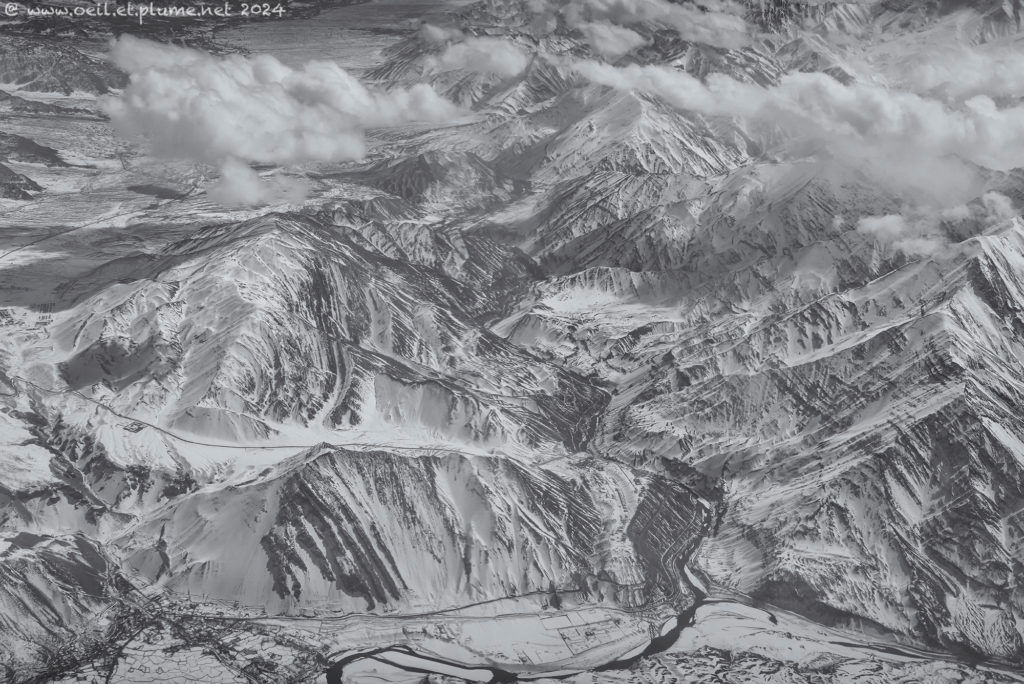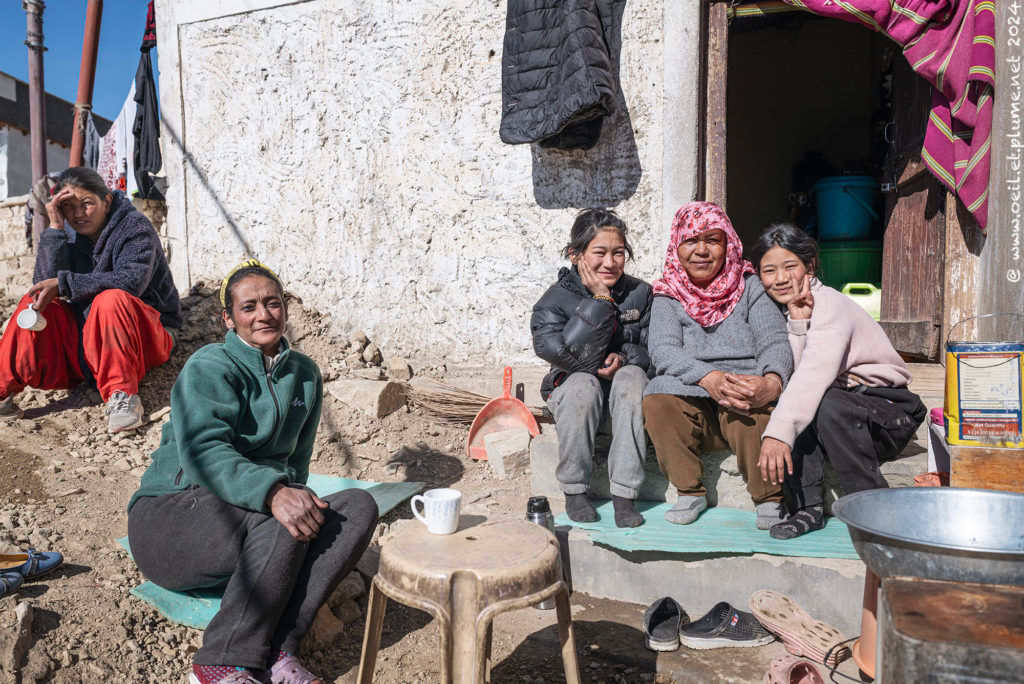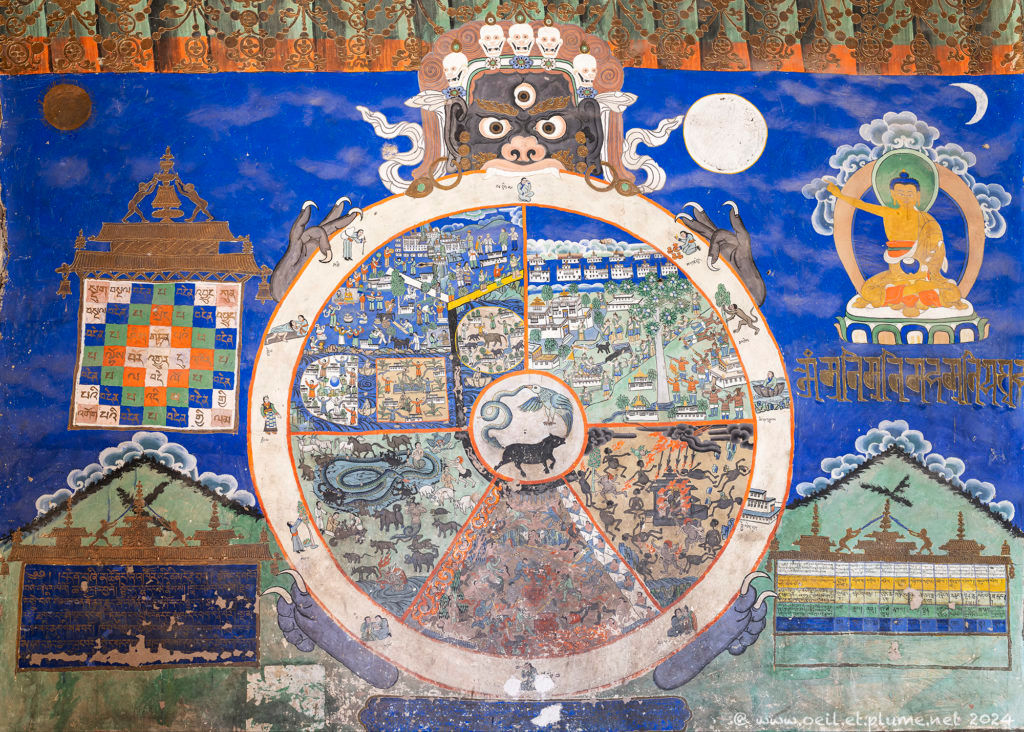India has been my first faraway destination abroad and will remain special to me. When I reached Delhi again early this year, I was welcomed by Surya, the resplendent Sun God in Hinduism religion and astrology since Vedic times. It took me much time and diplomacy to convince him that this time, I wish to explore other religious cultures flourishing in India.
The Himalayas mountain range and its predominantly Tibetan Buddhism culture fascinate me since my childhood. Having already visited Darjeeling (northeastern India) and the Bhutan kingdom, Ladakh came naturally to my mind. To make it more special, I opted for a winter experience.
Ladakh is administered by India as a union territory. It is part of the larger Kashmir region that is disputed between India and Pakistan since 1947 and India and China since 1959. Ladakh hosts large numbers of Indian military troops. Access to certain parts of the region is subject to special permit or simply off-limits to foreigners.
The Himalayas and the Indus River
One of the youngest mountain ranges on the planet, the Himalayas consists mostly of sedimentary and metamorphic rock uplifted by the Indian Plate in its move north into the Tibetan Plateau. The tectonic dynamics is still at play nowadays, which pushes the Tibetan Plateau of the Eurasian Plate further upwards.
Air transportation is the only option available in winter to reach Ladakh. On my way from the Indian capital Delhi to Leh town in Ladakh, my eyes remained stitched to my aircraft window to enjoy dramatic bird views of the Himalayas mountain range.
Worth recalling here that the Himalayas consists of four parallel mountain ranges: from south to north, the Sivalik Hills; the Lower Himalayan Range; the Great Himalayas; and finally the Tibetan Himalayas in the north.
The Lower Himalayas form most of the south-west portion of Ladakh. The twin peaks of Nun (Jammu-and-Kashmir) and Kun (Ladakh) are the only mountains over 7,000 m in this part of the Himalayas. The Great Himalayas stand further north.
Shortly before landing in Leh, the Indus River stands out visually, weaving comfortably in the bottom of Ladakh’ main valley. It rises in mountain springs northeast of Mount Kailash in western Tibet, to flow northwest through successively Ladakh, Kashmir and Pakistan.
The river is the backbone of Ladakh in many ways, and attracted the most important human settlements in Ladakh across history. Without the water collected by the Indus River, Ladakh would be barely habitable as it is a high-altitude desert. Consequently, water, snow and ice will be a key elements of my journey in Ladakh.
Leh
Initially, my stay in Leh was meant only to acclimatize me to the high altitude of Ladakh. In fact, I have been charmed by the Ladakhi capital town. At the first glance, the town prompted me a feeling of “déjà-vu”. Perched atop of a hill, the nine-storey Leh Palace – former residence of the royal family of Ladakh – evokes unmistakably the Potala Palace in Tibet.
I have enjoyed the impossible urban geography of the historical neighbourhoods which are made of tortuous, narrow alleys, steps and tunnels. Human settlements also colonised the stark and rocky slopes leading to the Leh Palace, in a search for space and security.
I also spent time in local markets and workshops. Activities such as looking at traditional craftsmen, tasting freshly baked bread or dry fruits, drinking Tibetan tea and chatting with local people, have helped me feeling the cultural heart of Ladakh’ capital town.
Ladakh means the “land of high passes” in Tibetan language, which points at its historical role in the regional commercial network across the Himalayas. For centuries, Leh has been an important stopover for traders traveling along the Indus Valley between Tibet, Kashmir, India and China. The closure of the Indian-China border along the Tibet region in 1960 severely undermined commercial exchanges between both countries across Ladakh.
Buddhism is nearly everywhere in town, including with decayed chorten (Tibetan version of Indian stupas) which remind us of the omnipresence of God and the finitude of human life. Visits in monasteries can be surprising as the novices’ and the monks’ daily life is not just about religious practice. As the Indus River, the main stream of Buddhism in Ladakh stems from Tibet. Leh hosts a sizeable population of refugees who fled Tibet in the 1960’s.
Tibetan Buddhism in Ladakh
Muslim residents, living mainly in Kargil district, outnumber Buddhists in Ladakh while Hindus represent a small minority of local population. However, Buddhism is the largest religion in Leh district, followed by Hinduism and Islam. In recent times, relations between Buddhists and Muslims in Ladakh have somehow soured due to socio-political conflicts.
Leh and its surroundings is full of gompas (monasteries) or other public marks of Buddhist culture. I visited a couple of them in the Indus Valley, enough to sense the historical and contemporary importance Tibetan religious culture for the Buddhist population in Ladakh.
Born in 1935 and enthroned in 1940, the 14th Dalai Lama Tenzin Gyatso fled Tibet in 1959 and resides in Dharamsala in northern India since then. His Holiness visits the Ladakh region at least once a year during the summer season. His portrait picture is displayed in many locations, including in prayers halls of gompas.
Back in Leh, I feel ready for the next chapters of my stay in Ladakh. I will first cross the Indus River in order to trek one of its tributaries, the Zanskar River.
Cheers,


































